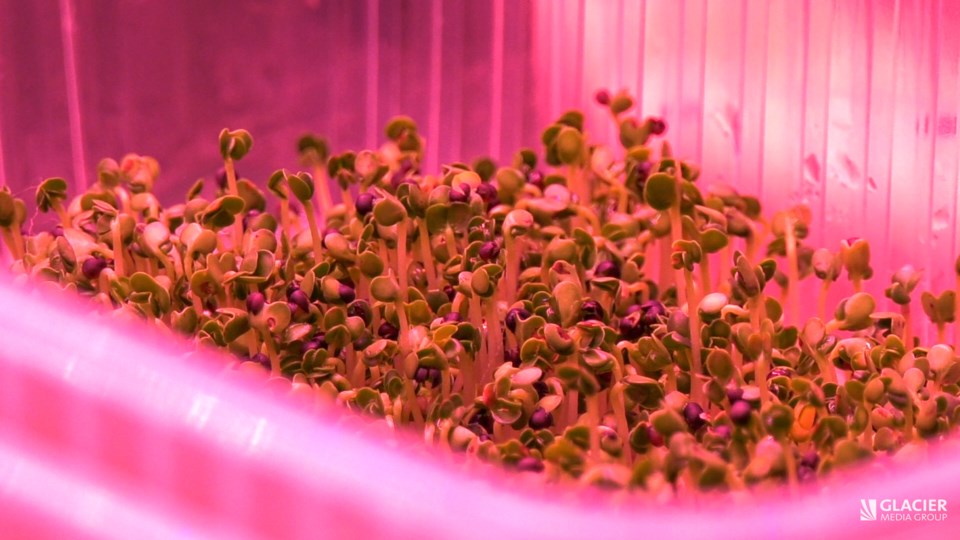If you’ve seen The Martian, you’ll know that Matt Damon survived 543 Mars days by growing potatoes in the native soil, fertilized with his own poop.
“That probably would not work,” says Gavin Schneider, vice-president of agronomy at Ecoation Innovative Solutions.
The North Vancouver-based firm – known for building artificial intelligence systems that enhance efficiency of food production – is developing new technology for astronauts to farm nutritious and tasty food on long-term space missions.
On Thursday, judges from the Canadian Space Agency visited Ecoation to evaluate the firm’s growing system as part of the Deep Space Food Challenge, which is awarding more than half-a-million dollars in funding to finalists. Meanwhile, NASA is evaluating U.S. companies in the stateside portion of the contest.
Currently, a group of top-10 Canadian semi-finalists are fighting for four finalist spots. The winners, which will be announced this spring, will take home $100,000 each. Next year, a grand prize of $380,000 will be awarded to the top firm.
To boldly grow where no plant has before, Ecoation has developed CanGrow, which is designed to supplement astronaut’s diet a three-year mission to the Moon or Mars.
“What we built is an indoor food production system that grows everything from tomatoes to mycelium,” Schneider said.
CanGrow is a modular growing system of tubes, trays, sensors, lights and carbon dioxide tanks designed to maximize food production with minimal input. Air that is fed to plants, also cools LED lights. A large portion of the greywater from watering the crops is recycled back into the system.
While a big portion of the contest is creating efficient technology, another is the food itself. Some of the competitors are focusing only on algae, others are growing black soldier flies.
“But the underlying component that goes into all food is taste,” Schneider explained. “If it doesn’t taste good, you’re not going to eat it. So that’s why we’ve chosen things like super sweet tomatoes.”
They’re also growing radishes for a spike of flavour, and mycelium – essentially the root structure of mushrooms – for savoury flavour and texture that people like to chew.
Space farming technology could be used in remote or urban areas
Another part of the criteria that hits closer to home is the potential application of systems like these in remote locations on earth.
“The real intention of the program is to develop and accelerate food applications that could be used for terrestrial applications here on earth,” Scheider said. “To feed refugee camps, to use this type of system in combination with regular field agriculture as well, or you could do propagation of the crops to speed up the amount of food that you can grow.”
It could even be used in urban settings, according to Ecoation CEO Saber Miresmailli.
“The problem with urban farming and homegrown food is the fact that the volume that you can produce is just too small. And the reason monoculture in agriculture is very successful is because they can do large volumes,” he said.
The modular nature of this system means you could theoretically stack hundreds of these growing shelves, functionally converting a city building into a farm.
“I think a practice like this can actually make urban farming far more real than what is it right now,” Miresmailli said.




